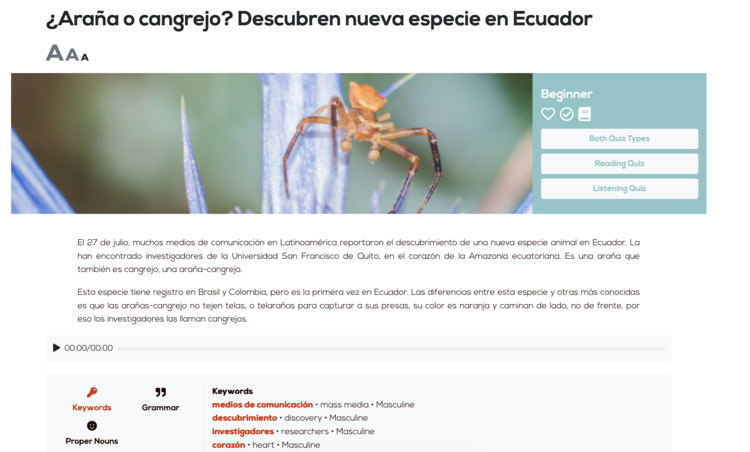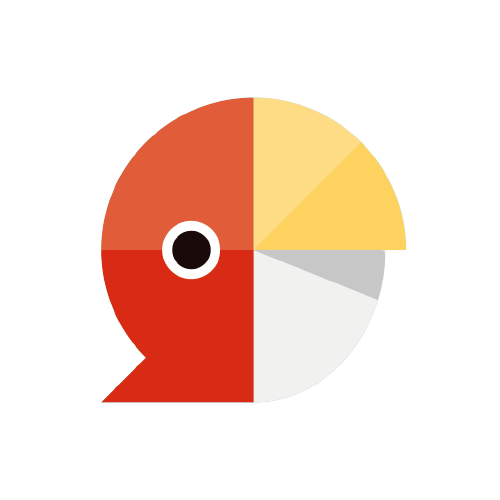How to Get Better at French Listening: 10 Strategies to Improve Your French Listening
Welcome to Part 3 of Newsdle's ongoing series on mastering the essentials of learning French. In our previous articles, we tackled Phonetics and Reading. This time, we're looking into arguably the most important skill of all when learning a new language: how to improve French listening. Strong listening skills are essential for effective communication and understanding. In this article, we’ve identified 10 practical strategies to enhance your French listening abilities.
- Attune Your Ear
- Listen Multiple Times
- Challenge Yourself
- Optimal Difficulty: 75%
- Use Transcripts
- Focus on French Listening Idiosyncrasies
- Active Listening Pays Off
- Combine Listening With Other Skills
- Videos are the Best Choice for Beginner Listeners
- Use French-only Listening Material
Let’s look in more detail at each of these How to Get Better at French Listening strategies and the ways they can help you improve your French listening skills.
1. Attune your ear
You can make a great start to improving your French by getting accustomed to the sounds and patterns of the French language. Initially, it will be difficult to understand natural speech from native French speakers, and the only way to improve French listening is to do plenty of it. Fortunately, there is no shortage of listening materials available to you, no matter where you are in the world. Podcasts, YouTube videos, audiobooks, French radio and TV, conversations with a tutor or language exchange partner – all train your ear to French’s unique sounds, rhythm, and intonation. Using these resources will gradually help you become more comfortable with understanding spoken French.
However just as you can’t learn how to run before you can crawl, you need to find listening material that is aimed at your level of understanding (see Strategy number 4 below).
2. Listen Multiple Times
For French learners listening just one time isn't enough to fully understand spoken French. A good strategy is to find a podcast or YouTube video that you find interesting and listen to it multiple times. Because you will listen to it over and over it’s best to choose something around 10 to 15 minutes long. When you listen to it a second and third time, things you missed the first time become clearer. The more you listen the more you will pick up that you hadn’t heard earlier.
If you have the patience, you can listen to the same track ten or more times. You can mix it up by sometimes listening with a transcript (see the next tip), or pausing and repeating sentence by sentence. Repeated practice will help you understand more and more of the content.
3. Use Transcripts
First a question: When you listen to a French podcast while reading along, are you practicing listening or reading? In my opinion, because reading in French is a bit easier, then that’s what your brain ends up doing: reading a text with a helpful French audio component. So, listening with a transcript is probably helping your French reading ability a lot more than your listening ability.
However, listening with a transcript really comes in handy when you have listened to a French audio several times, and there are still parts or words you just can’t pick up. If you then listen with the words in front of you, suddenly those hard-to-decipher words become crystal clear. After that, you will find that the next time you listen (without the text) your ear most likely can now understand what had once sounded like gibberish.
Another advantage of listening with a transcript is that it allows you to connect spoken words with their written forms, which in turn will improve your vocabulary retention and understanding of sentence structures.
You can get a similar benefit from reading apps like Newsdle, which have both written and spoken content. So, you can use Newsdle not only to practice reading but also to get better at listening.

Use Newsdle for French reading and listening practice
In simple terms, using transcripts as part of your learning routine is a smart way to work towards the larger goal of learning how to improve French listening.
4. Optimal Difficulty (75% Rule)
Actually, there's no “75% Rule”: experts differ over what is the optimum level that French learners should be able to understand when listening to the language. While it’s definitely good to challenge yourself, ensuring you understand at least 75% of the content can save you from getting frustrated. If you come across content that's too difficult, don’t worry. Bookmark it and come back to it in a few months to see how far you’ve come.
For beginners, it can be tough to find material that is both easy enough to understand (around 75% comprehension) yet also interesting to keep listening to, especially repeatedly. Sometimes you just have to slog through content that is less than riveting (though Strategy 5 below has a list of engaging YouTubers for beginners). And to spur you on, you should know that once you reach intermediate level there will be no shortage of interesting videos, podcasts, audio for graded readers, and more to enjoy. (And if you need convincing on why authentic materials are important in learning a language this article on the Newsdle blog explains in depth.)
5. Beginners: Make Use of Visual Aids
We listen with our ears of course, but for beginners, it will be a great help if you utilise your eyes as well. Visual aids can make listening materials much easier to grasp. There are some excellent YouTube channels designed for beginners where images, actions, and gestures are used to help a listener better comprehend the meaning, easing the learning curve. Here is a small selection of YouTube channels with videos aimed at beginners, mostly or entirely in French:
- La prof Elisabeth. One of the best in my opinion is La prof Elisabeth. Her channel has over a hundred short videos for beginners (and other levels as well) that introduce vocabulary, grammar, useful expressions, and so on – and all in French only.
- Raffaella Fraomene. She is a French teacher based in Italy and her YouTube channel is a treasure trove of listening materials for beginners. They range from hour-long videos that are like a free online French course (entirely in French) to short two- and three-minute videos.
- CCube Academy. The YouTubers at CCube Academy have an excellent selection of listening videos for beginners (A1 and A2 levels).
- GammaNetwork. You could also try watching the Extr@ Frenchweb series – the series is available on the GammaNetwork YouTube channel along with a few other interesting French series (Tintin for example).
- Français avec Pierre. This YouTube channel has videos for all levels, including a playlist of videos aimed at beginners but entirely in French.
(For a comprehensive overview of YouTube channels for learners at all levels, you can read our Newsdle blog article, The 11 Best YouTube Channels for Learning French in 2023).
Just a note for beginners: at first it will feel overwhelming to watch a video entirely in French. Don’t worry, this is completely natural and normal. The trick is to be both patient and persistent. Watch the content a few times, and gradually you’ll start recognising more and more words. Then watch again with French subtitles or a French transcript, and even more words will become clearer. Over time you will become increasingly accustomed to the French sounds, and before you know it you will be itching to tackle Intermediate material!
6. Challenge Yourself by Gradually Increasing the Difficulty
As your ear becomes attuned to French, a great strategy in the goal of how to improve French listening is to gradually raise the difficulty of the listening materials you choose. It's like giving your ears a workout! If you can understand pretty much every word of a podcast or video, it creates an amazing sense of achievement. The catch, however, is that it’s easy to fall into the trap of not stepping out of your comfort zone. Pushing yourself with more challenging material encourages your brain to kick into high gear and work even harder.
Progress happens when we nudge ourselves beyond what's familiar. Gradual increases in difficulty keep your learning curve trending upward. Embrace the challenge, then watch how your French listening skills grow!
7. Focus on the Idiosyncrasies of Spoken French
The trickiest parts of spoken French are the ones that differ from the languages you're used to. Some characteristics of spoken French include:
- Words don't always sound the way they're spelled: For instance, the plural "s" and the "-ent" ending for third-person plural verb forms are usually silent.
- French Liaisons: Sometimes two words blend together to sound like one. If the first word ends in a silent consonant and the next word begins with a vowel, that consonant is pronounced in the liaison.
- "Glidings" in Casual Speech: Native speakers often glide words together in casual talk, causing some words to drop out entirely. For instance, the "ne" in the negative structure "ne + verb + pas" might disappear, similar to how English speakers turn "I am going to…" into "I'm gonna…".
- Vowel Variations: Vowels, like "e," can have various sounds. Even a slight change in pronunciation can alter a word's meaning. If you don’t pay attention to these variations, you can easily misunderstand what is being said.
If you have the patience, you can try transcribing what you hear, a bit like a dictation test. Then compare what you think you heard with the French audio transcript. This way you will identify which parts of spoken French you are not hearing correctly. For example, your transcribing exercise might identify that you keep mishearing the “an” nasal sound as “on” (the phonetic sounds /ɑ̃/ and /ɔ̃/). You can then focus future listening sessions on distinguishing between the two sounds.
8. Active Listening Pays Off
Active listening is a key strategy in how to get better at French listening. It involves giving your full attention to the content, and actively trying to understand and process what's being said. This approach is far more effective than passive listening, where it’s easy to let your brain wander and the French, you’re hearing just becomes a vague background noise.
The best way to listen actively is to silently repeat in your mind each word as you hear it. Some words you will immediately understand without even having to translate them into your native language, while others might not immediately make sense, and you'll have to let them go as your ear and brain move on. to the next word. With practice, you'll start comprehending more words instantly.
Keep in mind that occasional passive listening can still be beneficial, especially if you are at a more advanced level. It can help with retaining and reinforcing existing vocabulary. It also plays an important part in immersion strategies.
9. Integrate Listening with Other Skills
To maximise your learning progress, you can combine your French listening with other language skills such as speaking or reading. We’ve already highlighted the value of reading along with transcripts, and how this will develop not only your listening ability but your French reading skills. You can practise your pronunciation by repeating out loud what you’ve heard. And to develop your speaking skills, try summarising in your own words what you just listened to.
Vocabulary acquisition is another vital language skill. While not everyone is a fan of word lists, they can be useful. If you're comfortable with this approach, you can create vocabulary lists from your listening materials. Alternatively, you could add new words you encounter to a Spaced Repetition program like Anki.
10. Embrace French-Only Listening Material
If you do a Google Search for French Listening Resources, you’ll bring up plenty of links. However, not all of them will be helpful. This is because many French learning sites have too much English material, especially at the beginner level. This is a waste of your French learning time. (If you listen to a 20-minute “French” podcast where 18 minutes is in English, you’ve actually only studied French for 2 minutes. This is not going to add much to your French progress). Immersion is a powerful technique for learning languages, and that means minimising any use of your native language as much as possible.
Conclusion
Improving your French listening skills is a gradual process that requires consistent effort and dedication. By employing these tips and strategies, you can enhance your comprehension, become more attuned to the nuances of the language, and ultimately elevate your overall French language proficiency. These strategies on how to improve French listening will lay the foundation for achieving greater fluency and confidence as you listen and learn French.
Author
Nick Dennis

Nick is an English teacher who has taught English as a Foreign Language in China, Italy and France. He has a Bachelor of Arts (Modern Languages), majoring in French, from the University of New South Wales. He loves travel, reading and football and, of course, learning languages. Four years ago, Nick and his wife co-founded an online English language school targeted at the Chinese market (since sold to Chinese investors). He has also ghost-written the autobiography of a well-known Australian horse trainer.
Extensive reading in French will not only unlock the beauty of the French language but also gain insights into its culture and heritage. Happy reading, and enjoy exploring new worlds through the pages of French texts!


